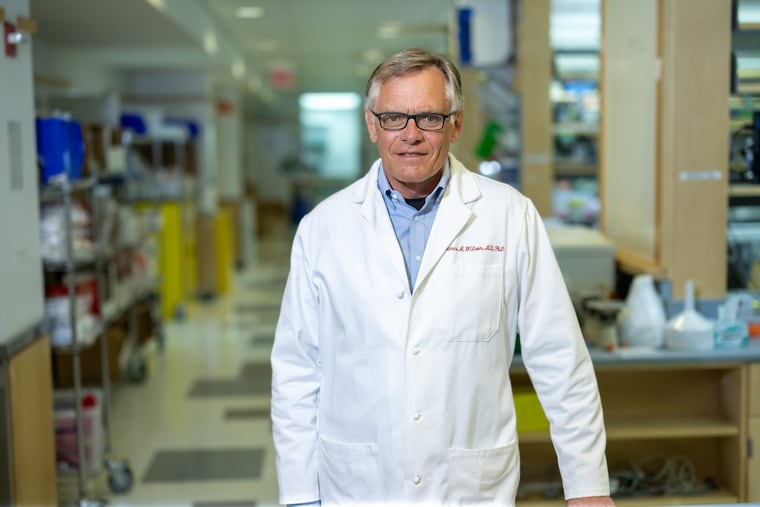How UPenn’s Jim Wilson became a big deal in gene therapy
Although Wilson first became known to many after the death of a trial participant, his unwavering focus on curing rare diseases has fueled major progress in the field.

When it comes to the field of gene therapy, there aren’t many names bigger than Jim Wilson.
It was announced Wednesday that Wilson, the director of University of Pennsylvania’s Gene Therapy Program, is leaving the university after 33 years for the private sector. He’s been named CEO of GEMMA Biotherapeutics, a biotech company, and board chairman of Franklin Biolabs, which provides diagnostic testing to gene therapy companies.
» READ MORE: UPenn will spin out Jim Wilson’s gene therapy program and split it into two companies
Wilson’s time at Penn was dedicated to finding gene-based cures for rare diseases. He faced significant hurdles along the way but is now known as one of the preeminent experts in the field.
Early failures
Wilson first became known to many for tragic reasons: In 1999, Wilson was the lead scientist in a landmark experiment in which an 18-year-old became the first person to die as a result of gene therapy.
Jesse Gelsinger had a genetic deficiency in a crucial liver enzyme that, in its most serious form, can be fatal within a few days of birth. Gelsinger’s form was relatively mild, which enabled him to live a mostly normal life, provided he followed a strict diet and took dozens of pills per day. He volunteered for the experimental trial to save the lives of people with more severe forms of the deficiency.
As part of the trial, Gelsinger received a therapy consisting of a corrected version of the liver enzyme gene inside a modified virus that could deliver it into his cells. But the virus ended up triggering an immune reaction in his body, and less than one week later, he died.
It was a major setback for the field, and for Wilson. Penn was fined $500,000 and paid a settlement to Gelsinger’s family, and Wilson was barred from conducting clinical trials for five years. The scientist began giving lectures on what he learned from the tragedy, and published an apology in a scientific journal. For years, he avoided the press, and stuck to research in animals and test tubes.
Rare disease research challenges
But he continued to pursue the promise of gene therapy to cure — not just treat — rare diseases.
Rare diseases are defined as anything that affects fewer than 200,000 people in the U.S. But because there are thousands of rare diseases, up to 30 million people are living with at least one rare disease in this country alone.
A major hurdle to developing treatments for rare diseases is that companies often don’t want to invest in a product that’s only useful to a handful of people. With fewer customers, there is less of an opportunity to cover the costs to develop the drug, as well as all the costs associated with the treatments that failed along the way.
What’s more, if a gene therapy cures a disease, patients only need to take it once, rather than a steady supply of pills over their lifetimes. Companies end up charging a lot for each dose to make the time and effort to develop a cure for a rare disease worthwhile.
Gene therapy successes
To protect future trial participants from what happened to Gelsinger, Wilson began using different viruses to deliver corrected genes into cells without triggering an immune reaction in patients. This launched a major comeback for Wilson — and the field of gene therapy.
In 2019, the U.S. Food and Drug Administration approved the first commercial gene therapy using Wilson’s new virus — Zolgensma, which corrects the genetic defect that causes spinal muscular atrophy, affecting 1 in every 6,000 to 10,000 people. The cost per onetime dose: $2 million. (Subsequent gene therapies for rare diseases have topped more than $4 million per treatment.)
According to Penn, dozens of companies have been using Wilson’s viruses to develop new gene therapies. In 2020, Wilson cofounded the start-up iECURE, which began testing a gene therapy in infants with the same liver enzyme deficiency as Gelsinger.
But Wilson’s return to the forefront of gene therapy research was not always smooth. In 2022, the health sciences news site STAT reported that his former employees were accusing him of creating a toxic workplace. A Penn investigation confirmed some of the allegations, but determined that Wilson was not to blame.